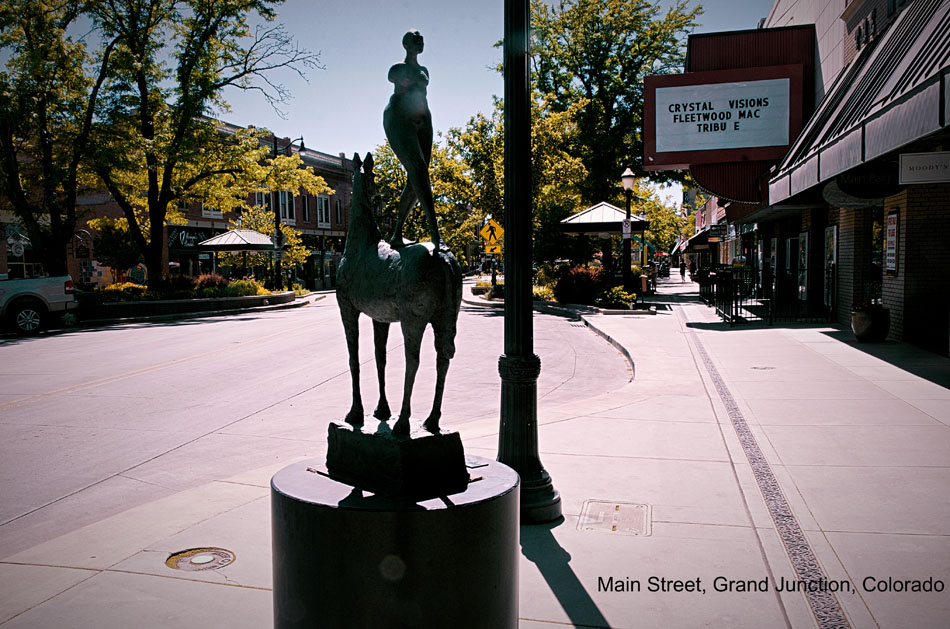Grand Junction is the largest city on Colorado’s Western Slope with a population of around 150,000. Native Americans lived and hunted in this area for thousands of years. Europeans first settled here in the 1880s at the junction of the Colorado River (then called the Grand River) and the Gunnison River, thus the name Grand Junction. Colorado Mesa University’s campus is here and its 10,000+ students liven up the place. What makes it stand out is the proliferation of public art, unlike any other comparably sized city in the Western US. By promoting local, regional and other artists, the city is smartly enticing visitors to come.
I grew up in Denver and had traveled through here periodically. As a young adult, I thought of it as just a backwater city. About ten years ago, I stopped there while driving to Montrose and was amazed at the public art.
For this visit, my friend Mike and I were on the last few hours of our 16-day, 3000-mile Rocky Mountain Road Trip. We stopped to get gas, then decided to eat and then I couldn’t help but walk Main Street and photograph the entertaining and imaginative statues.
When To Go
Anytime is good to visit this remarkable and revolving collection. The area can have hot summer days and very cold winter ones. However, it’s usually dry and suitable to walk the streets of the downtown
How to Get There
Grand Junction is conveniently located on Interstate 70. It’s a good place for a break when traveling between destinations. For instance, it’s about 200 miles and 4-hour drive to Denver, 280 miles and 4-hour drive to Salt Lake City, 110 miles and 2-hour drive to Moab, UT and 110 miles and 2-hour drive to Dinosaur National Monument.
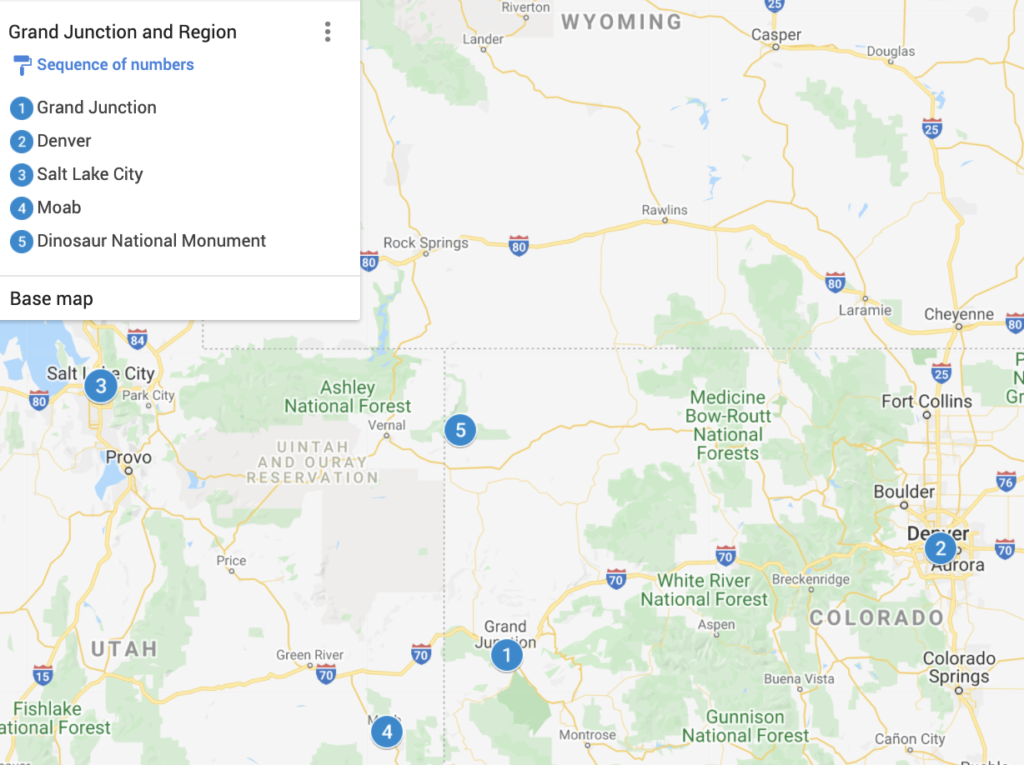
Where to Go
Grand Junction typically has more than 100 sculptures on display, many downtown. You should start on one end of Main Street, walk one side of the block and return on the other side. While crossing a block, look left and right for more on the side streets.
We were there only a few hours but had lunch in Clara’s Cantina, which had reasonable prices, outdoor seating and friendly waiters and waitresses. For coffee, we found the excellent Kiln Coffee Bar. The Hog and the Hen was full of tasty ice cream and candies.
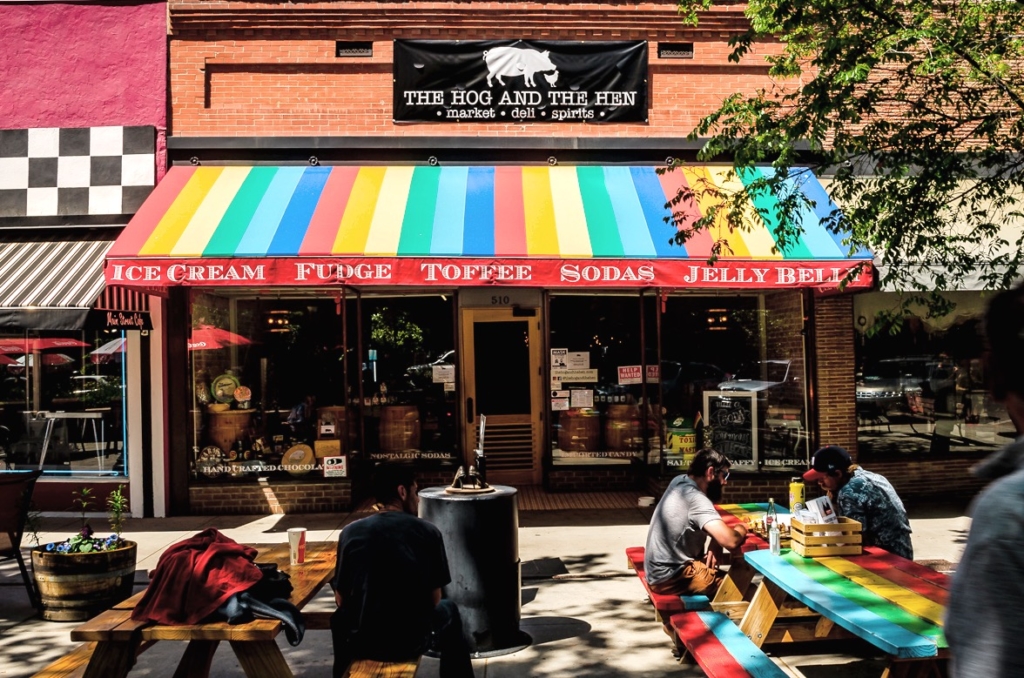
All of these are on Main Street, which has a number of interesting places to shop for curios and local products.
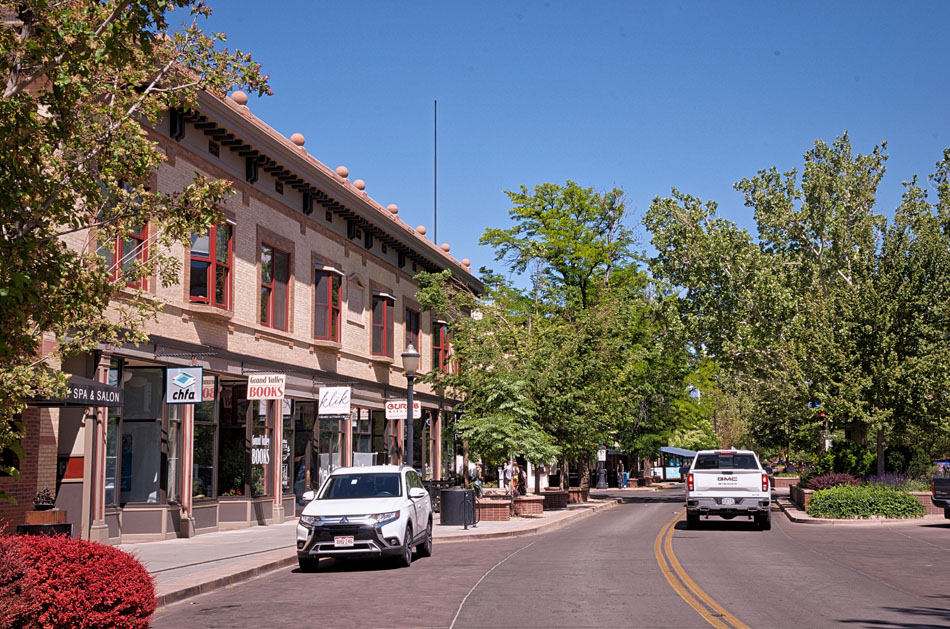
If you have a day or more, check out nearby Colorado National Monument and Grand Mesa Scenic Byway.
Sculptures
My favorite sculpture is Dalton Trumbo writing in a bathtub, where he claimed he did some of his best work. He was an American screenwriter and novelist who scripted many award-winning films, including “Spartacus”. One of the “Hollywood Ten”, he refused to testify before the House Un-American Activities Committee in 1947 during their investigation of communist influences in the motion picture industry. As a result, he was blacklisted in Hollywood. He was portrayed by Brian Cranston in the 2015 movie “Trumbo”.
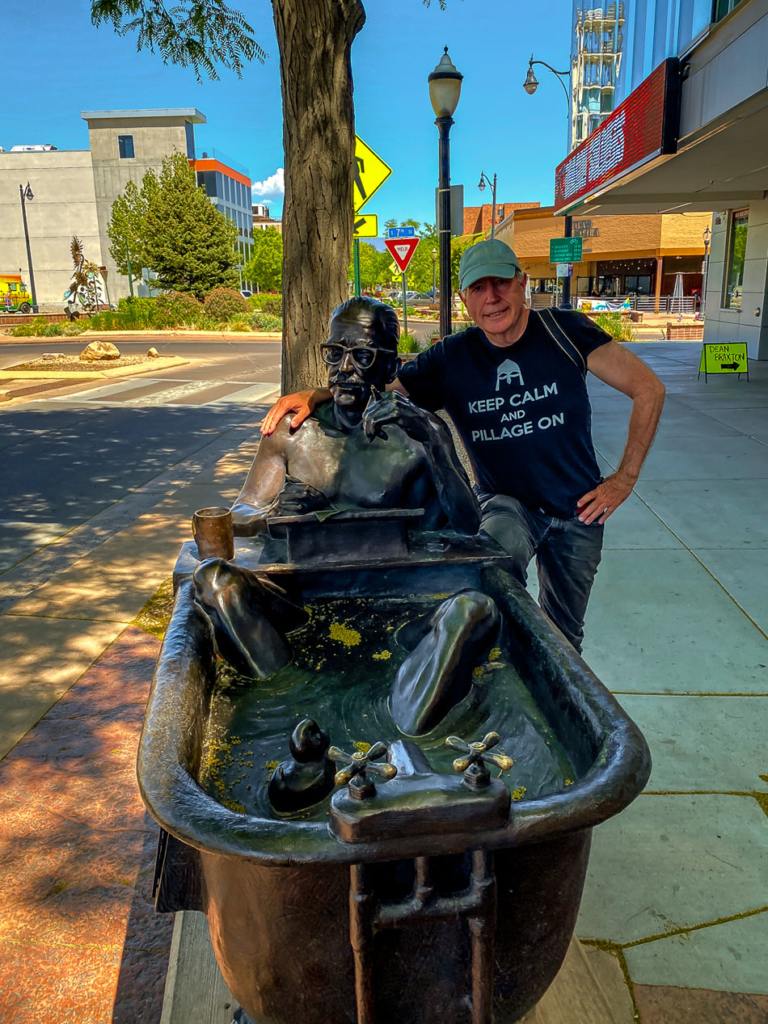
Why is Trumbo and his bathtub here? He grew up and attended high school in Grand Junction. His experience in the city was the basis of his first book, the 1935 “Eclipse”, written in a social realist style. The folks who made this sculpture happen was The Dalton Trumbo Historical Recognition Committee aka “The Dalton Gang” (a play on the Old West outlaw gang). J Michael Wilson is the sculptor.
I loved this affectionate, bronze statue of hometown Chet and Vernie Engstrom, founders of the Enstrom Candies off Main Street. The artist is Karen Jobe Templeton.
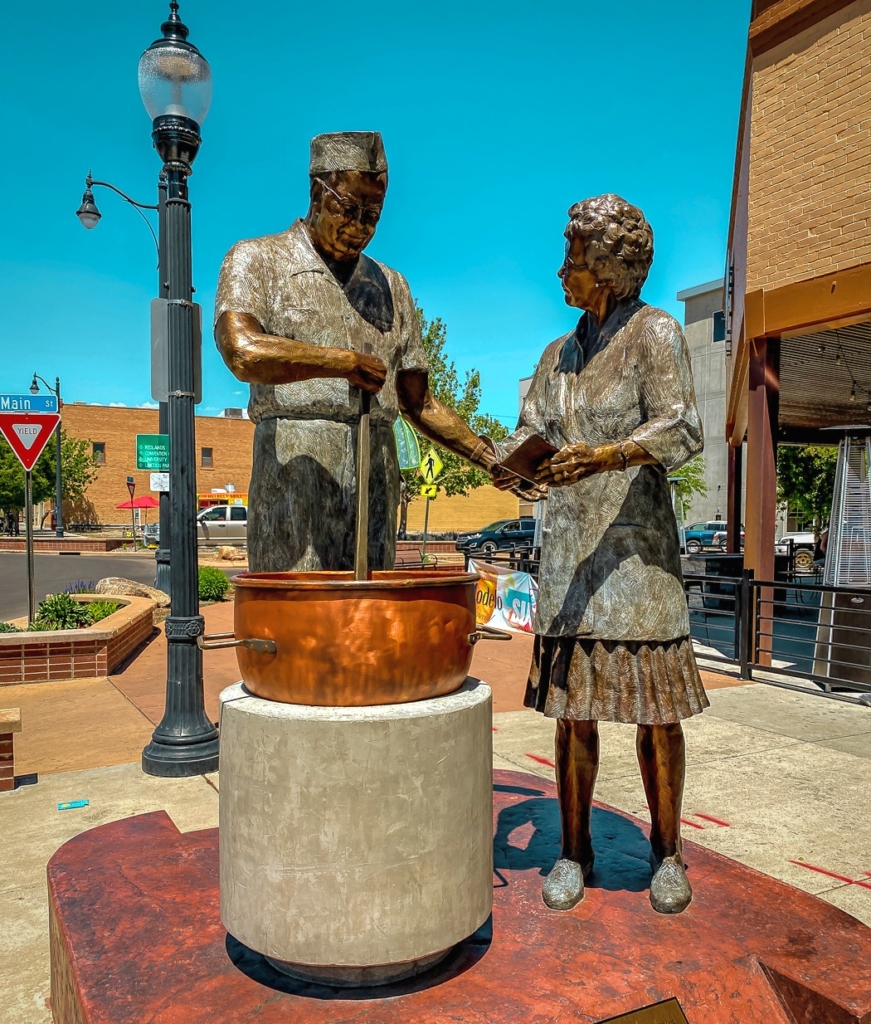
“Felicia”, by Pavia Justinian, is a stylish invitation to dance and emanates movement and energy.
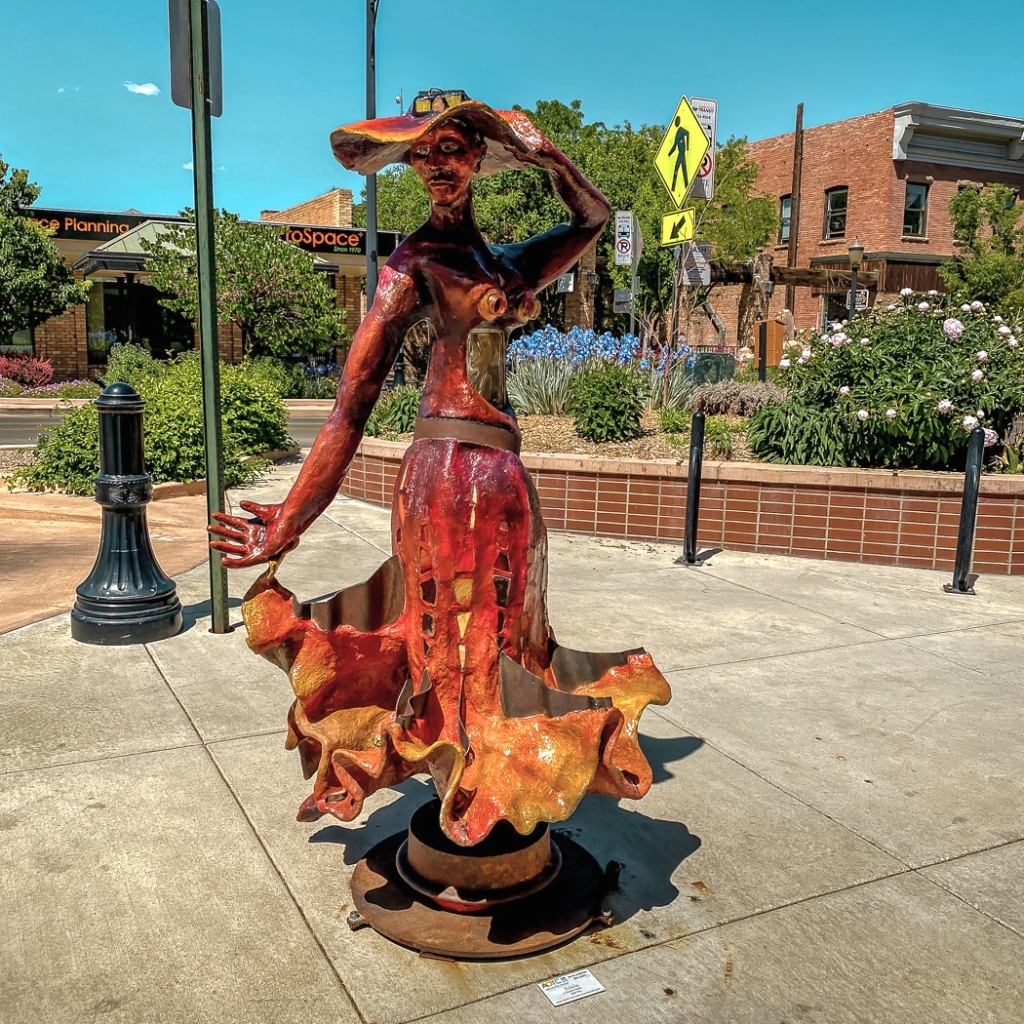
Artist James Haire made this life-sized “Freewheelin II”, which portrays movement even though the wheels are stationary.
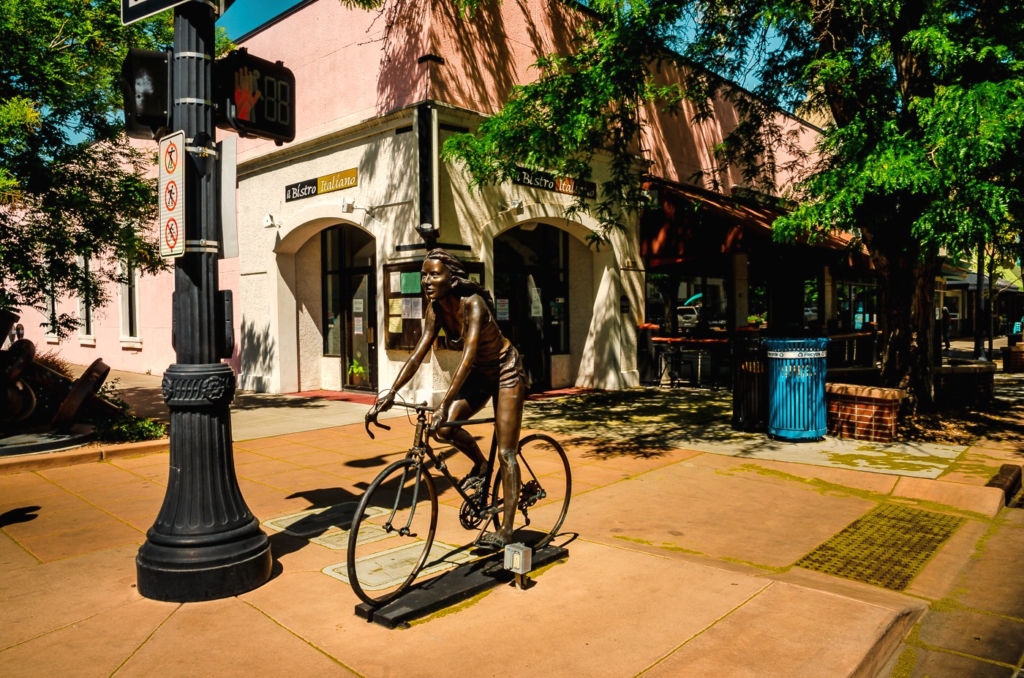
“Chrome on the Range II” by Lou Willie was dedicated in 1989. The name is a takeoff on the old country song, “Home on the Range”. The shiny buffalo is a culmination of carefully assembled, hand cut chromed car pieces.
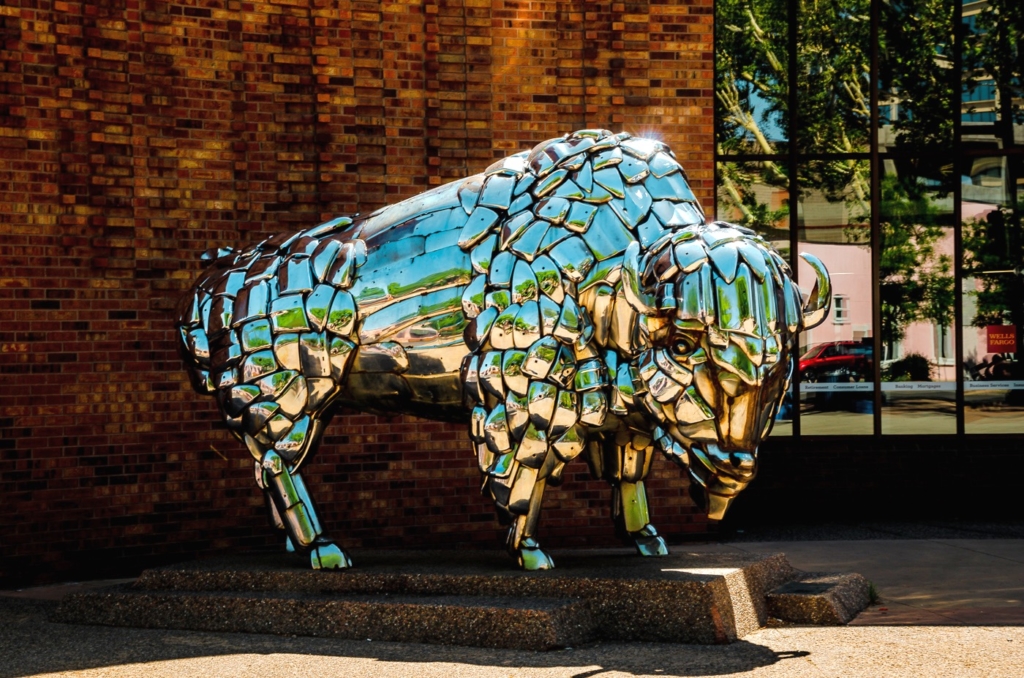
It reminded me of the work of Jay Laber on the Blackfeet Reservation in Montana.
These are just a few. There are so many more in this remarkable outdoor art gallery, you should spend as many hours as you can here.
How We Got Here from Provo, Utah
After passing by the sprawling Salt Lake City, we stayed the previous night, Saturday, in Provo Utah. It’s a huge college town with over 40,000 students. The largest school is the well-known Brigham Young University. We went to Main Street expecting the normal lively college town activities. We stopped in an improv comedy club and found the skits were cleaner than freshly laundered clothes – mostly punning humor and definitely no swear words
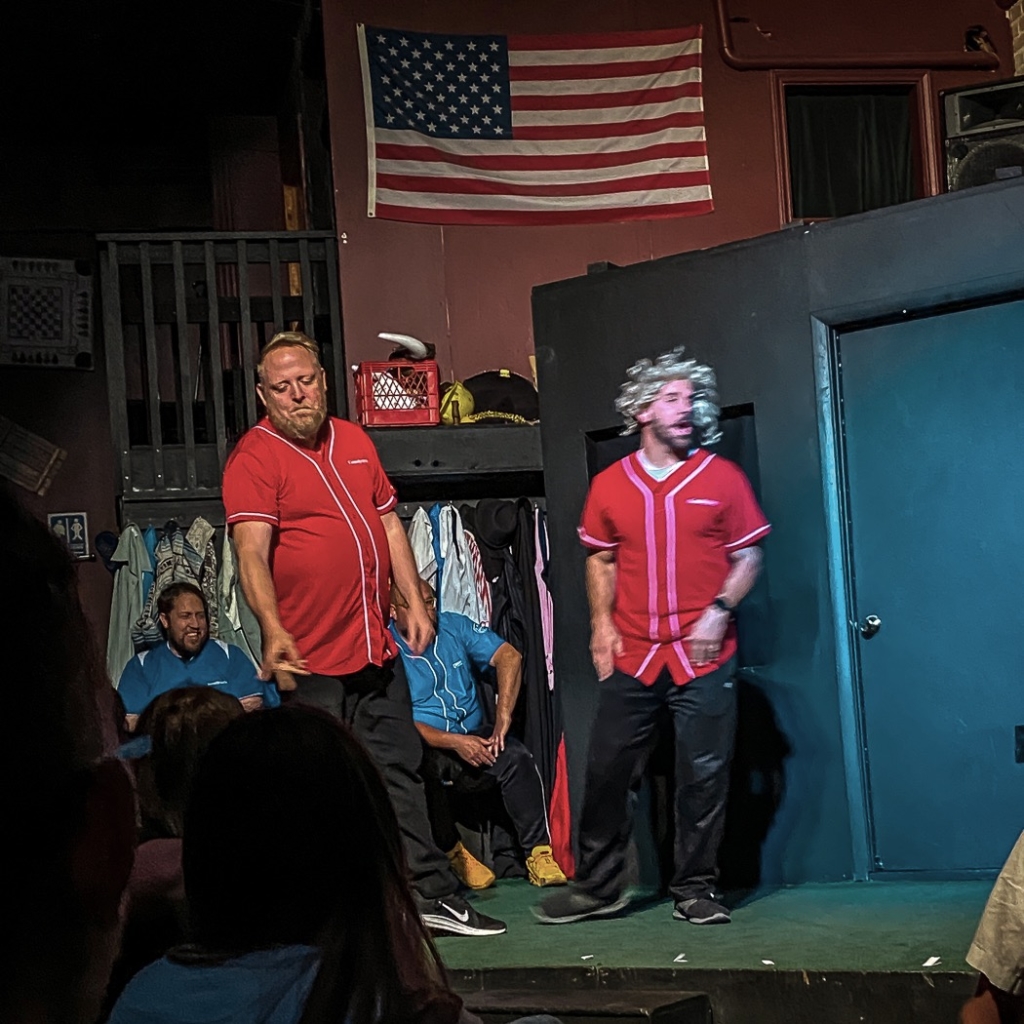
This was quite a contrast to New York City where extreme, not-made-for-prime-time repartee is laced with expletives, ethnic stereotypes and drug references. In any case, the crowd laughed uproariously throughout the show.
We should have been prepared when we went earlier into a restaurant a few doors down the street with kegs in the wall.
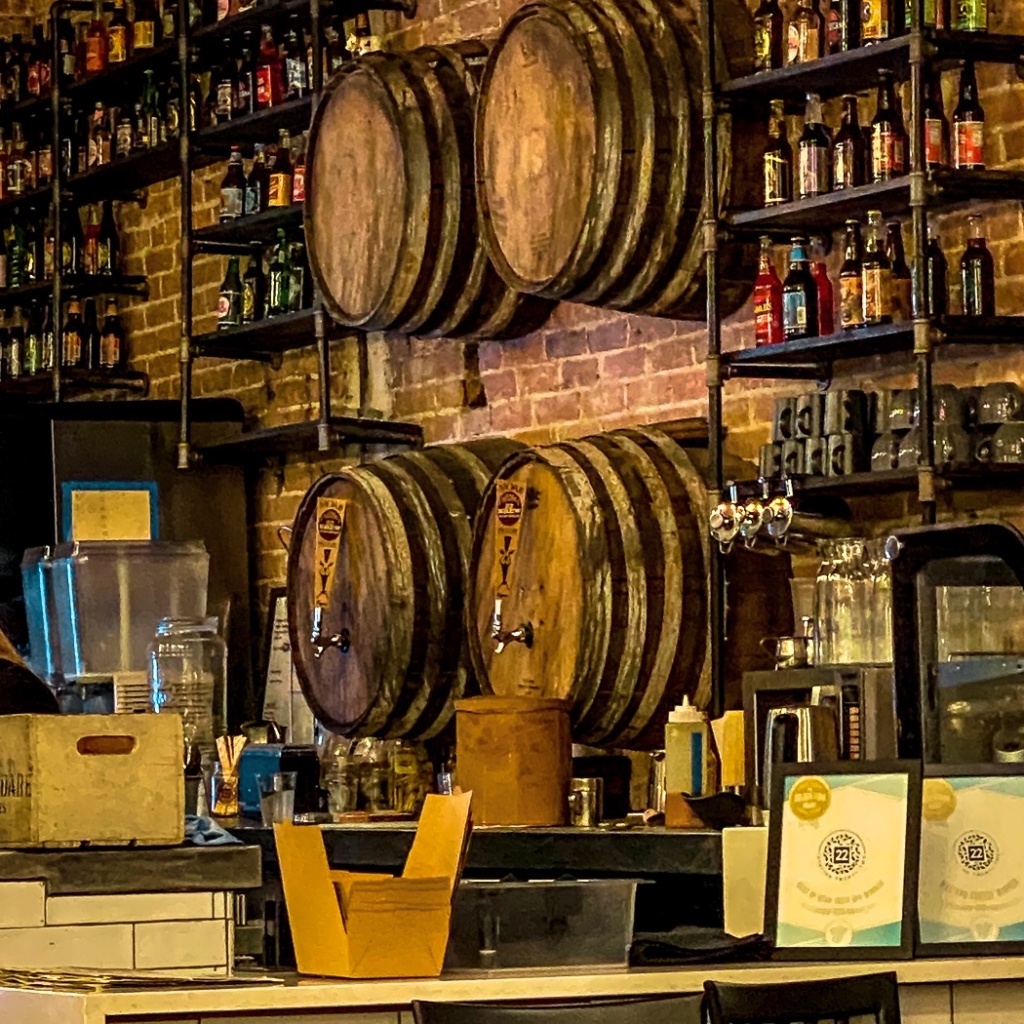
Expecting beers made on the premises, we were amazed that the drink selection was totally non-alcoholic. Our waitress explained we were within 500 feet of a prominent Mormon temple and the city elders passed a law that no alcohol could be sold within that distance.
A very different college environment that I experienced back in the day in Boulder, Colorado.
The next day, we drove from Provo, south of Salt Lake City. We went south on Interstate 15, east on US 6 through interesting canyons. At Castle Gate, the road becomes US 191, which we took to Green River and caught Interstate 70 East to Grand Junction.
Glenwood Canyon, Colorado
It’s a very scenic drive from Grand Junction to Denver, the end of our 16-day trip through the Rocky Mountains. Perhaps the highlight of this last leg of our journey was Glenwood Canyon, shown here from the passenger seat in our truck.
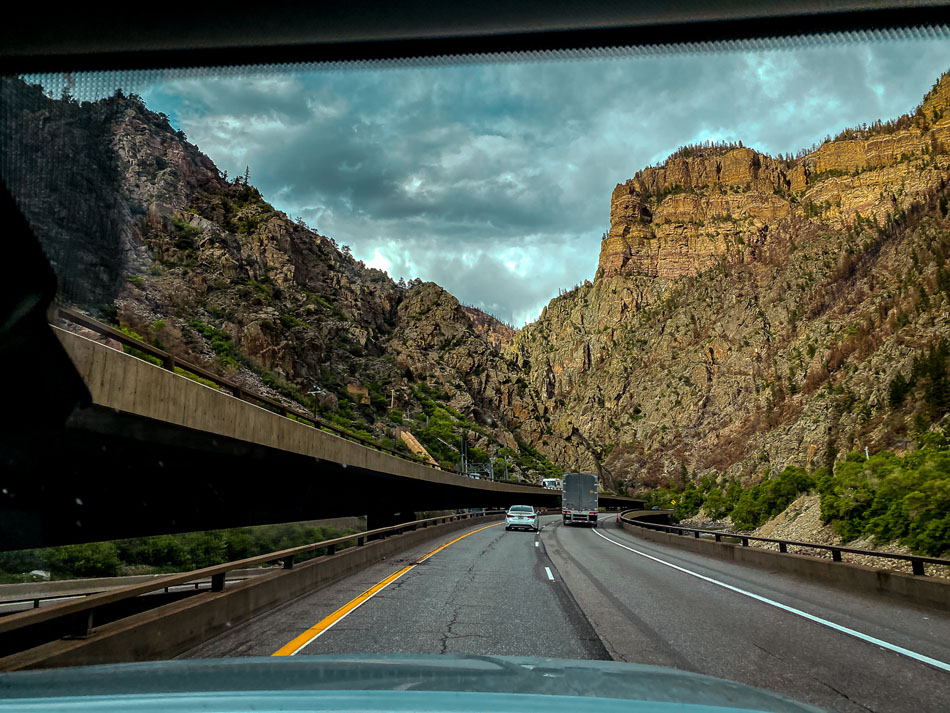
I never ceased to be amazed at the civil engineering involved in building an interstate highway through this mountainous terrain.
Final Thoughts
Grand Junction city government should be congratulated on supporting artists, many from the region, and enriching the lives of residents and visitors by their works. I wish many other towns and cities would engage in the same. It’s surprising it doesn’t happen more often, as promotion of the arts stimulates tourism and the local economy.
Spending over two weeks in the Rocky Mountains reminded me how scenic and magnificent they are. Through my life, I’ve crisscrossed them many times and still in this trip I found new areas to discover. Colorado, Utah and Wyoming still awe me, even after traveling through them for decades. Idaho and Montana, which I’d only briefly been to, surprised me with their vast wilderness which was a joy to photograph. I highly recommend doing this whole trip or any part of it. You will have experiences you’ll always remember!

